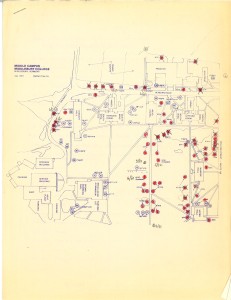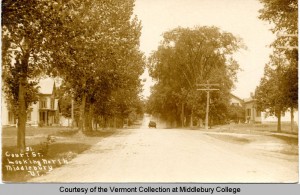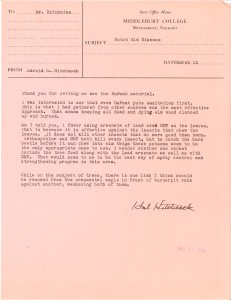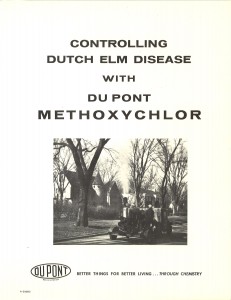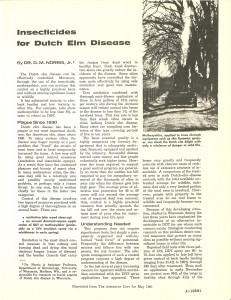Like many other towns, cities, and campuses, Middlebury has a long and storied history with the Amercian Elm. The following are pictures from the College Digital Archives (thanks! see them for copyright information) and the tree files from Middlebury’s office of Facilities Services. Click on the pictures for a larger view.
Looking through the colleges digital archives , early pictures of the campus show a nearly treeless landscape. The College was sited outside of town, on a rocky knoll, in what was probably poor sheep pasture.
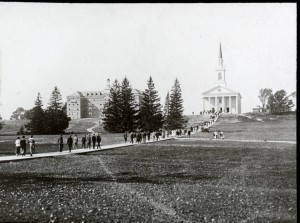
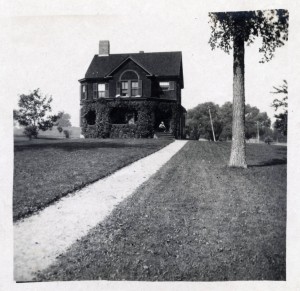
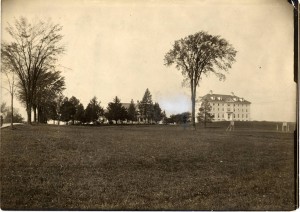
The Town of Middlebury at this time, like many other New England towns and cities, featured elm lined streets.
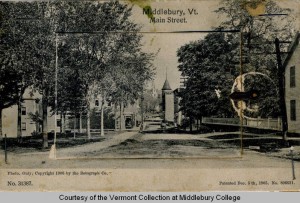
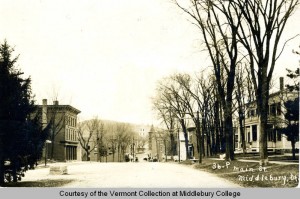
In the 1920’s Middlebury College started a concerted effort to plant many more trees on campus, and American Elm figured prominently, as was typical for town and municipal plantings of the era.
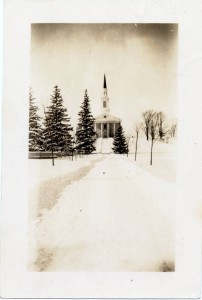
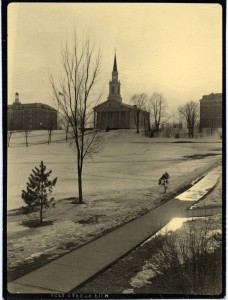
Two pictures of the Chi Psi house (now Munford) show how quickly elms can mature and make an impact in the landscape.
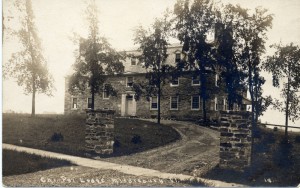
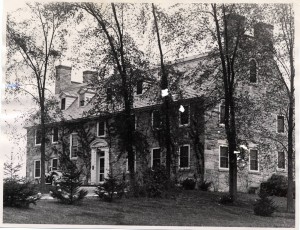
For about 40 years, the elms grew well, and about 200 graced the campus. Elms lined the walkway to Mead Chapel, forming the classic cathedral shaped arch over the sidewalk. Elms were planted along College Street, lower campus, and in the small quad around Mead, Proctor, Hillcrest and Gifford. Elms were also planted around many of the fraternities, such as DKE and Chi Psi.
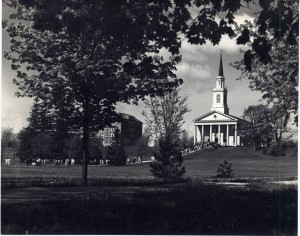
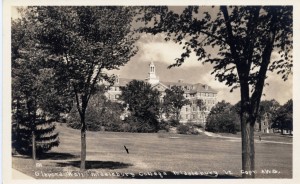
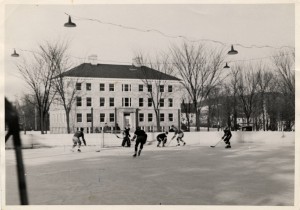
At maturity, elms lined many streets and buildings, creating an attractive shade canopy for campus and town roads, such as College Street.
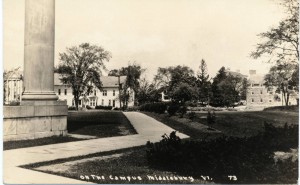
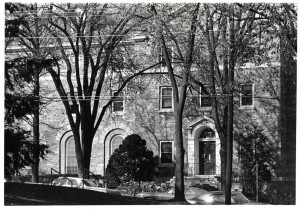
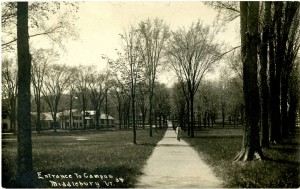
Dutch Elm disease had come into the state in 1945 down near Bennington, but hadn’t made into the Middlebury area until 1960.
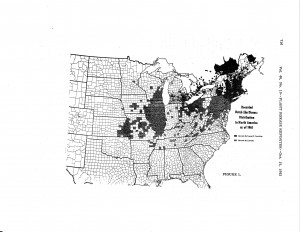 At that time Middlebury College started the effort to preserve its elms. Early efforts focused on controlling the elm bark beetle. The major pesticide used was DDT.
At that time Middlebury College started the effort to preserve its elms. Early efforts focused on controlling the elm bark beetle. The major pesticide used was DDT.
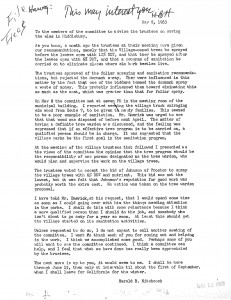
Rachel Carson’s classic book ‘Silent Spring’ effectively ended the barely effective sprays, with spraying in the Middlebury area discontinued in the early 1980’s. Other pesticides were trialed, including Malathion and Bidrin.
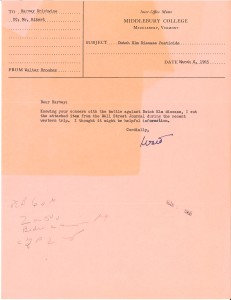
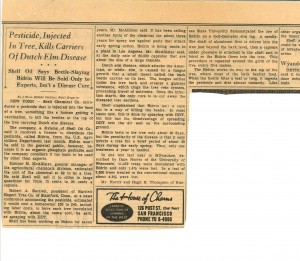
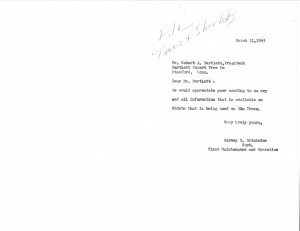
Sanitation was also emphasized. The State of Vermont would inspect elms, and when a dying tree was found, it would be tagged, and a notice sent to the landowner requiring removal of the tree.
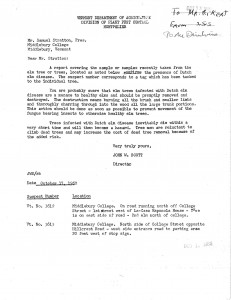
Middlebury removed many elms early in the battle, and again in the 1070’s and 80’s, with over 117 lost in a three year period from ‘84-’86. From 1981-1991, 174 elms were lost. Many of the remaining trees had major limbs removed to stop the spread of the disease.
